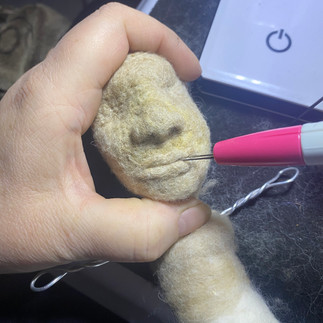1929 – 1945
Birthplace: Frankfurt, Germany
Diarist who documented the persecution of Jews by the Nazis
Author



I created "Anne holding her diary" to honor Anne Frank on what would have been her 94th birthday. We remember what hate did, and remind everyone we must learn from history or we are doomed to repeat it.
Born Annelies Marie Frank on June 12, 1929, in Frankfurt, Germany, Anne dreamed of being a journalist. She grew up speaking both Dutch and German.
The Nazis came to power in 1933. Otto and Edith Frank, Anne's parents, no longer saw a future for their family in Germany. The same year, they moved to Amsterdam, where Otto had started a company called Opekta which manufactured and distributed the pectin-based gelling preparations to be used in the making of jam.
At 13 years old, Anne, a German-born Jewish girl kept a diary documenting life in hiding under Nazi Persecution. Living in Amsterdam at Prinsengracht 263, which now stands as a museum: the Anne Frank House. Her father Otto Frank, was the only survivor of the Holocaust of the families hiding in the secret annex of the attic. Margot (19), Anne (16), and their mother Edith Frank (44) died along with Fritz Pfeffer (55) and Hermann (46), Auguste (45), and Peter van Pels (18) at concentration camps.
(Personal photo taken in May 2016 Amsterdam 263 Prinsengracht as I entered the Anne Frank House museum)
Anne's older sister Margot received notice she had to report to a work camp. It was decided the Franks and their friends would hide in the annex in an upper room of Otto's business behind a bookcase. The family would hide for nearly two years in that room to try to survive the Nazis.

The families were discovered August 4, 1944 by the Nazis. It has been debated about who turned them in. Amsterdam was liberated August 15, 1945.
Miep Gies, along with several co-workers bravely risked their own safety and those they loved to help everyone hiding in the attic. After the attic was raided, Miep found and kept Anne's diary in hopes of giving it back to her.
Otto Frank returned June 3, 1945, 10 months after he was arrested, thankful to find the helpers of the secret annex still there and working. Otto Frank lived with Miep and her husband Jan for seven years after the liberation. Miep gave Anne's diary to Otto and for the remainder of her life, she ensured people learned about Anne Frank and tirelessly promoted the cause of tolerance.
The Diary of Anne Frank was first published on June 25, 1947, titled "Anne Frank's Het Achterhuis" (The Secret Annex). After several editions in different languages, it became popular around the world. Recently the "Diary of Anne Frank" has been the subject of bans in some Florida and Virginia schools for Anne's own references to her sexuality.
We must continue to learn and teach about the Holocaust. We must never forget what happened less than 80 years ago at the hands of an evil man who got away with atrocities for years.
Jewish people makeup 2.4% of the American population yet are on the receiving end of 10% of all religious hate crimes. #bluesquare #🟦
There were many people who tried to help the Jewish community. Ordinary people were doing extraordinary things to protect Nazi targets. The most concerning part of what happened during the Holocaust was the “Bystanders”. This catch-all term has often been applied to people who were passive and indifferent to the escalating persecution that culminated in the Holocaust.
If a minute was given in respect to each person lost during the holocaust it would take
eleven and a half years of silence to honor all the victims. Yes, you read that correctly.


There is a Nebraska Holocaust Memorial located at 3600 O St in Lincoln at the historical Wyuka Cemetery.
"A Small Light" is the story of Miep Gies. “She was a regular person who history happened to and she happened to step up“ – Joan Rader, author of "A Small Light."
If you would like to donate in memory of Anne Frank click here or
Sources:
Anne Frank House Museum
NPR
The Diary of Anne Frank.
The History Channel
National Geographic
#Thewomen #AnneFrank #Annefrankdiary #Annefrankhouse #History #neverforget #bannedbooks #holocaust #bluesquare #needlefelting #needlefeltingartist #🟦




















